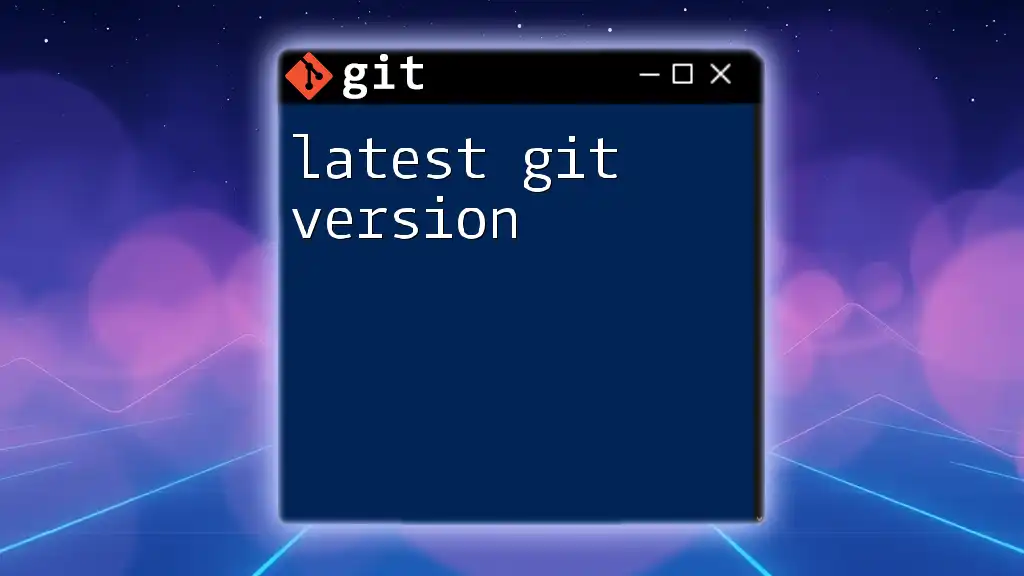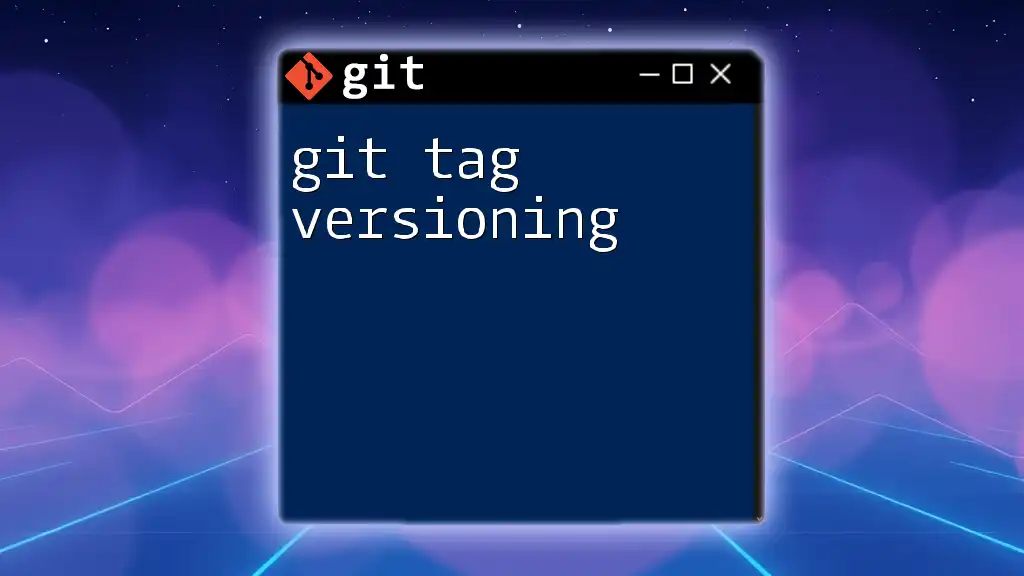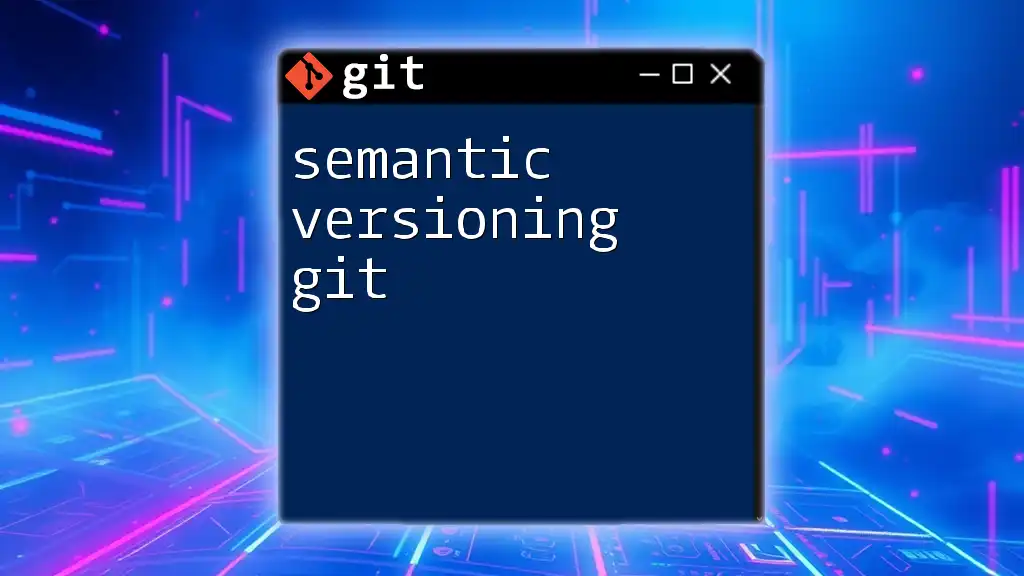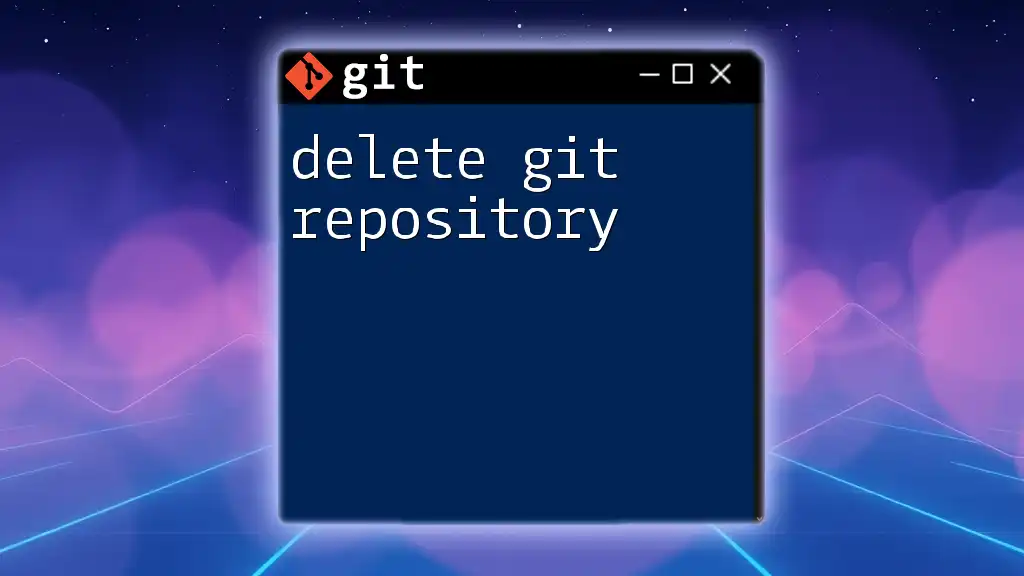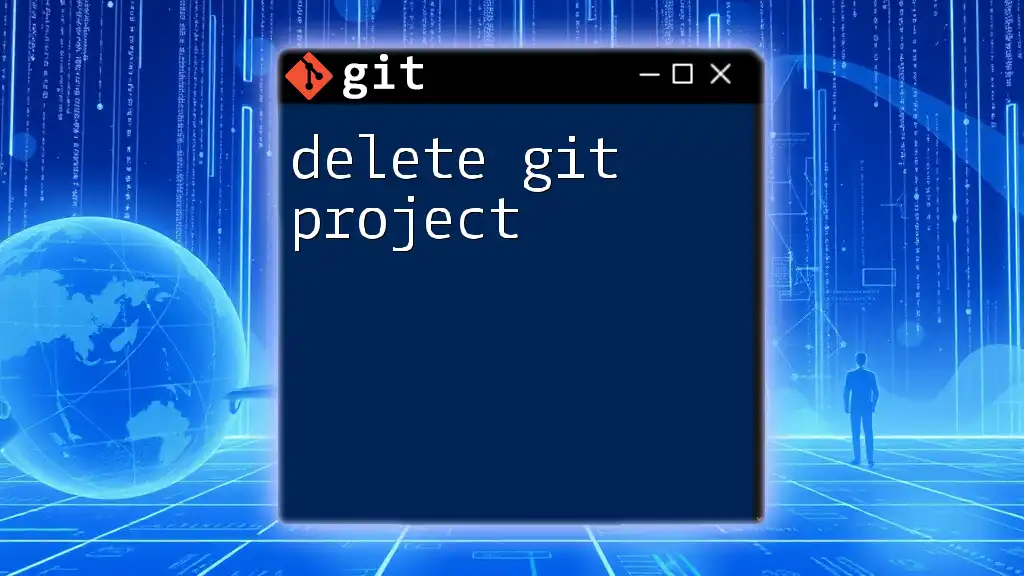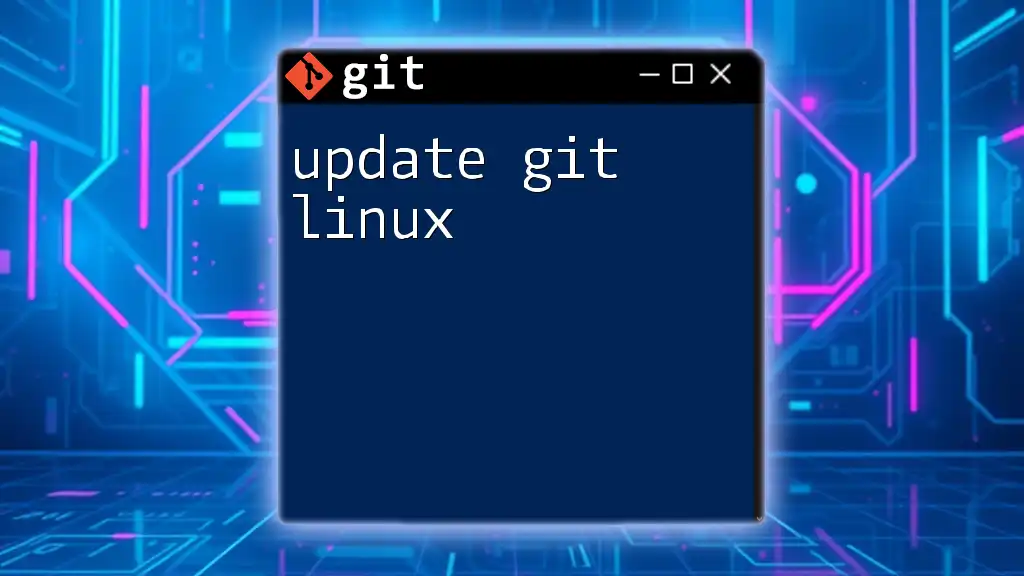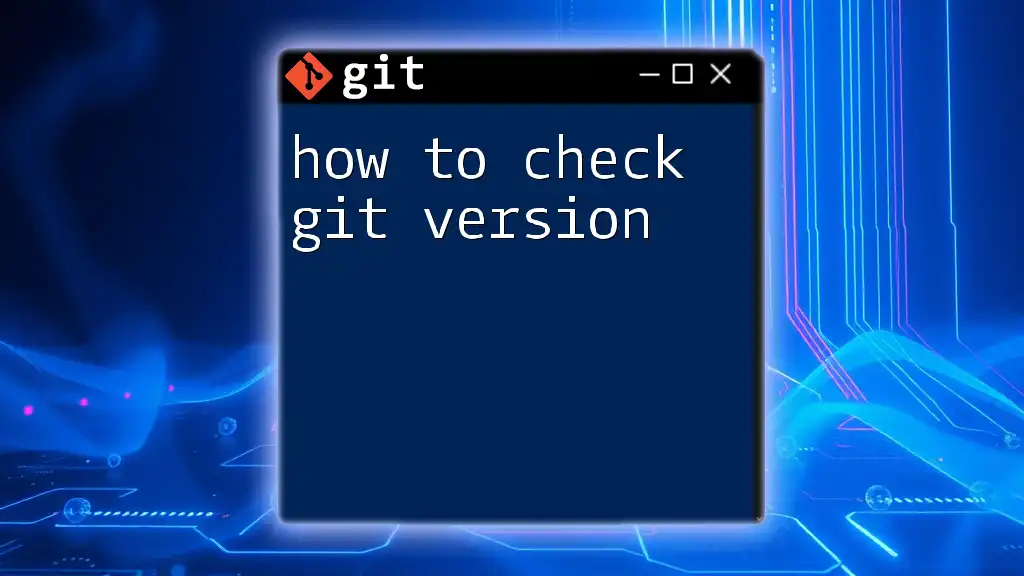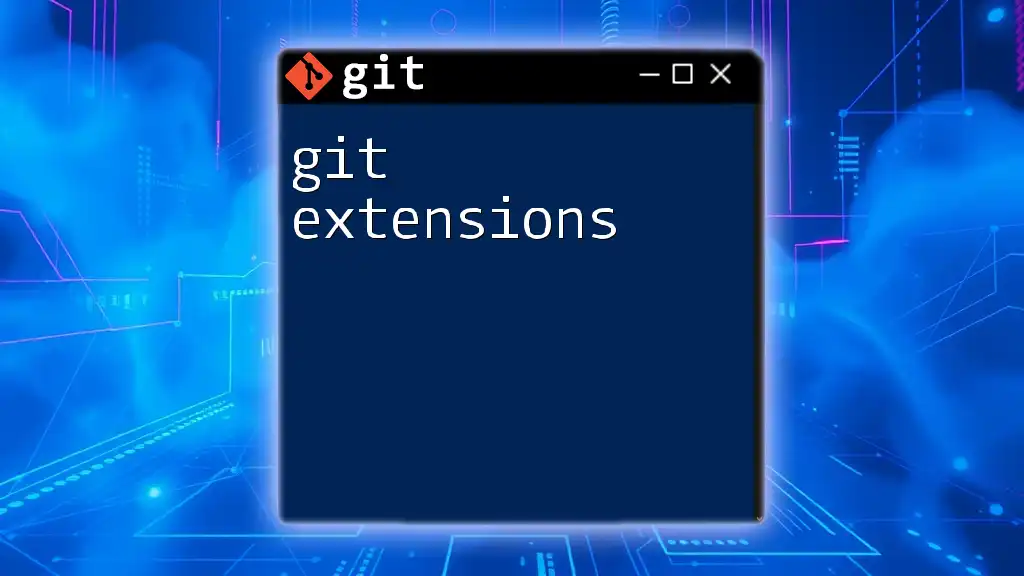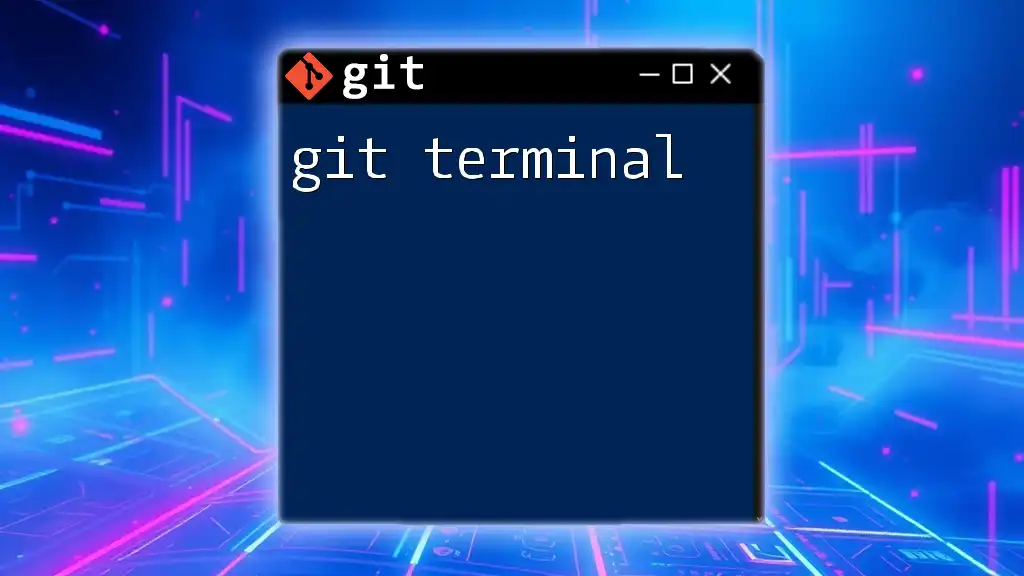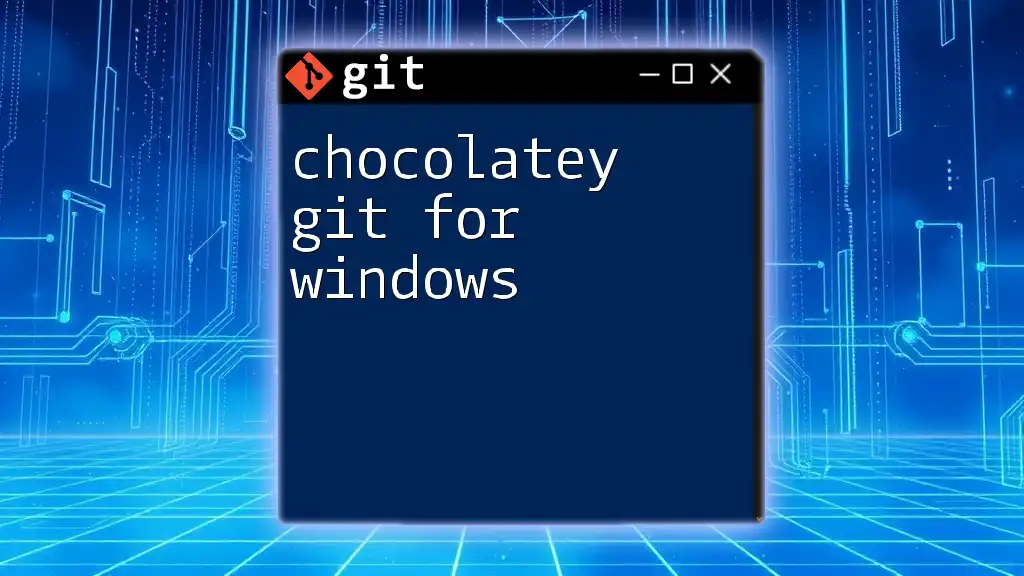The latest Git version, as of October 2023, introduces enhanced features for improved performance and usability, allowing users to execute commands more efficiently.
Here's how to check your current Git version:
git --version
What is the Latest Git Version?
Definition of Git Versioning
Git versioning is based on semantic versioning, which follows a format of major.minor.patch. This structure helps users understand the significance of changes made in each release:
- Major: Significant changes that may include breaking changes or major improvements.
- Minor: New features are added in a backward-compatible manner.
- Patch: Backward-compatible bug fixes.
Understanding this versioning system helps users gauge the potential impact of upgrading to a new version of Git.
How to Check the Latest Version
To discover what version of Git you currently have, you can use the command line. Simply run:
git --version
This command will return the installed Git version, and it’s essential to know this before upgrading. To check for the latest Git version available, visiting the official Git website provides updated information about new releases and features.

What's New in the Latest Release?
Key Features and Improvements
The latest Git version typically introduces several key features and improvements that enhance functionality and user experience. For example, major updates could include:
- Performance Improvements: Enhanced handling of large repositories, reducing load times and improving responsiveness.
- Merge Conflict Resolution Tools: New or improved tools that help simplify the process of resolving merge conflicts, making collaborative workflows smoother.
- New Commands and Options: Features such as enhanced functionality in the status command to provide a more presentable output.
For instance, a new command may look like this:
git new-feature-command --option
By integrating these new features into your workflow, you can significantly improve efficiency and take advantage of the latest advancements in Git management.
Deprecated Features
As new features are introduced, certain older features may be deprecated. This can be beneficial as it streamlines the tool and removes outdated functionalities. Understanding which features are eliminated and why is crucial for adapting your workflows. For instance, in some releases, certain commands might be replaced with more efficient alternatives.
It is advisable to stay informed about these changes to avoid disruptions in your development process.
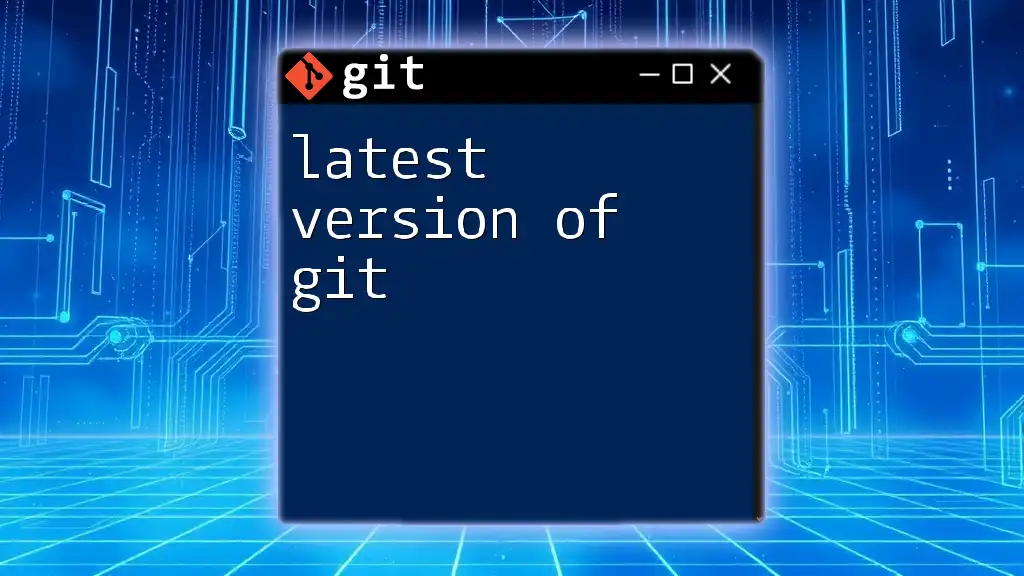
Getting Started with New Features
Installation and Setup
To utilize the latest Git version, you first need to install it. Follow these steps based on your operating system:
-
Windows: Download the installer from the official Git website and follow the setup instructions.
-
macOS: Use Homebrew for a quick install by running:
brew install git -
Linux: Use the package manager specific to your distribution. For Ubuntu:
sudo apt-get update sudo apt-get install git
After installation, it's important to set up your Git configuration. This can be done using the following commands to personalize your experience:
git config --global user.name "Your Name"
git config --global user.email "your.email@example.com"
Example Commands with Latest Features
Familiarizing yourself with the new command syntax is crucial for effective usage. For example, if the latest version introduces a new merge strategy, you might use:
git merge --new-strategy <branch-name>
Practicing these commands will help you incorporate them into your regular workflow.
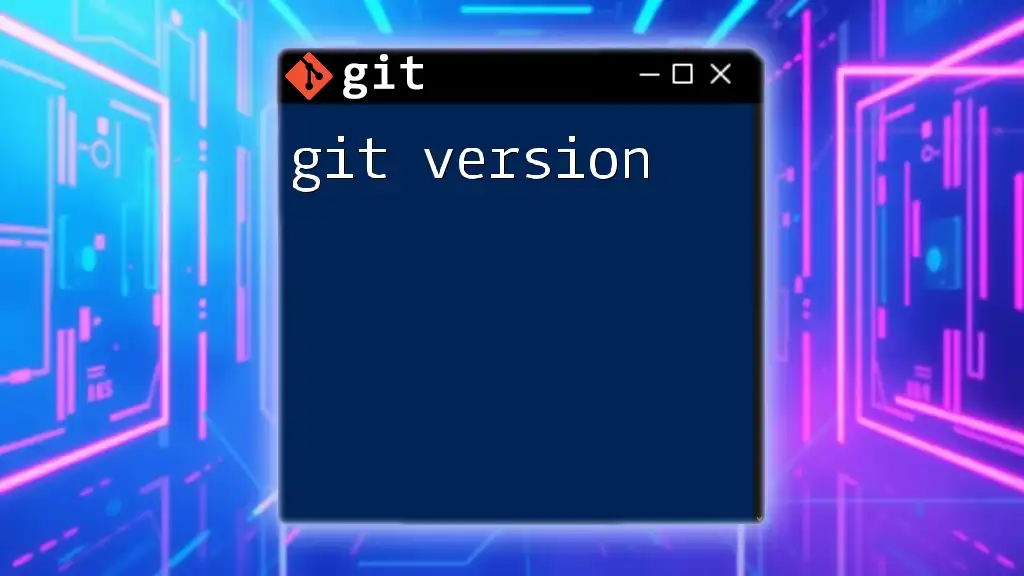
Troubleshooting Common Issues
Common Problems You Might Encounter
When upgrading to the latest Git version, you might face issues such as compatibility problems with older versions or difficulties during installation.
Solutions and Workarounds
To tackle these problems, you can follow a few troubleshooting steps. For instance, if you encounter merge conflicts, the new tools allow for easier resolution. You can use:
git mergetool
This command opens a visual conflict resolution tool that simplifies the process, making it more intuitive and less error-prone.
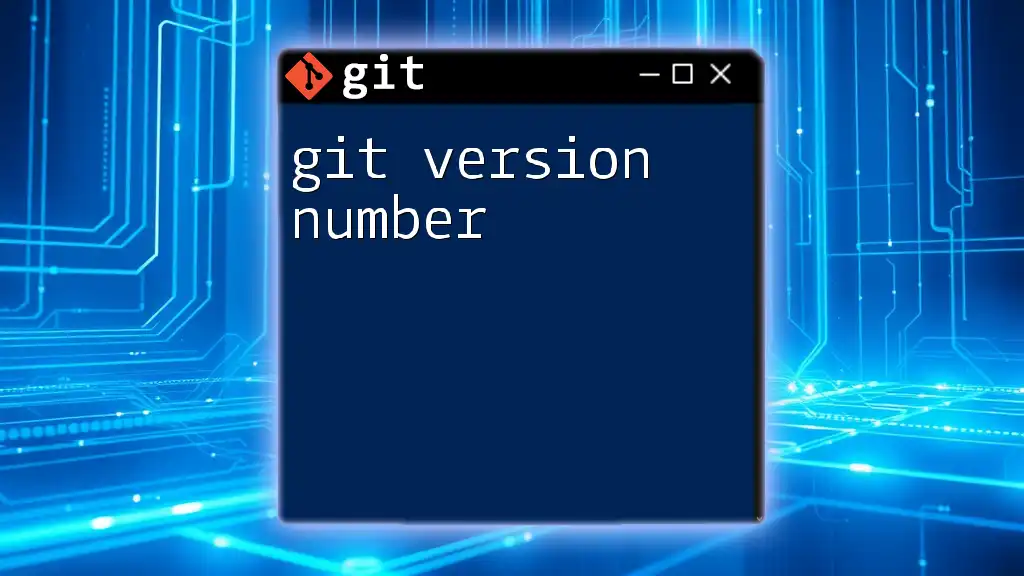
Best Practices for Using the Latest Git Version
Keeping Your Git Version Up-to-Date
Staying updated with the latest Git version is essential. Regular updates ensure you have access to the newest features and security patches.
To keep your version current, check for updates frequently and consider setting up a periodic reminder to check for updates or automate the process using your system's package manager for Linux or Homebrew on macOS.
Leveraging New Features for Efficient Workflows
Using the latest features can optimize your workflows. For example, the improved status command can enhance your daily Git interactions:
git status --short
This command provides a concise overview of your repository’s state, making it easier to navigate changes quickly.
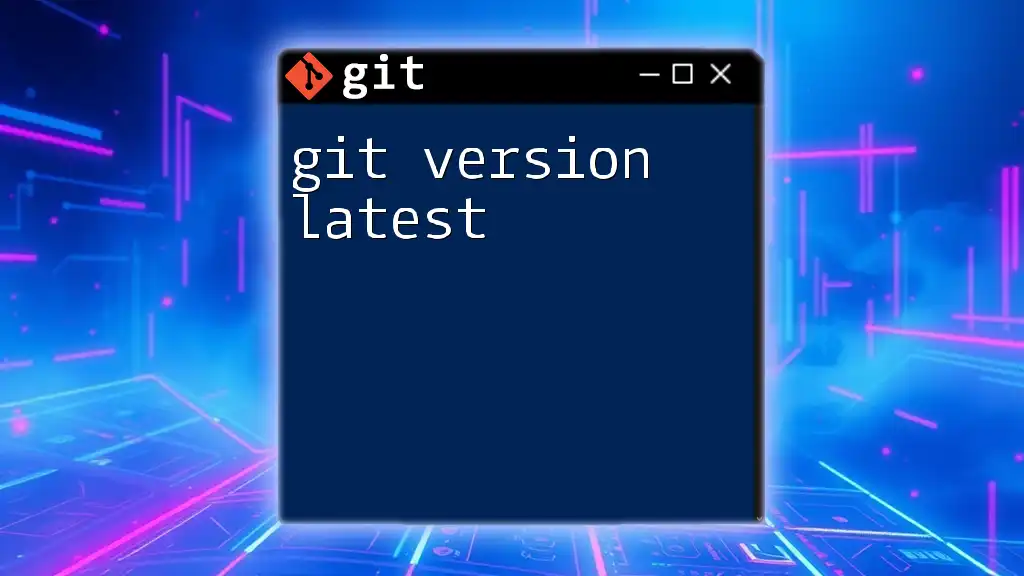
Community and Support
Where to Find Help
If you encounter challenges or have questions about the latest Git version, numerous resources are available. Community forums, including Stack Overflow and Git-specific threads, offer valuable insights and support from other users and developers.
Contributing to Git
Contributing to the Git project is an excellent way to deepen your understanding of the tool and its features. Whether through reporting bugs, sharing your own experiences, or even programming enhancements, participating in the community can enrich both your knowledge and the Git ecosystem.
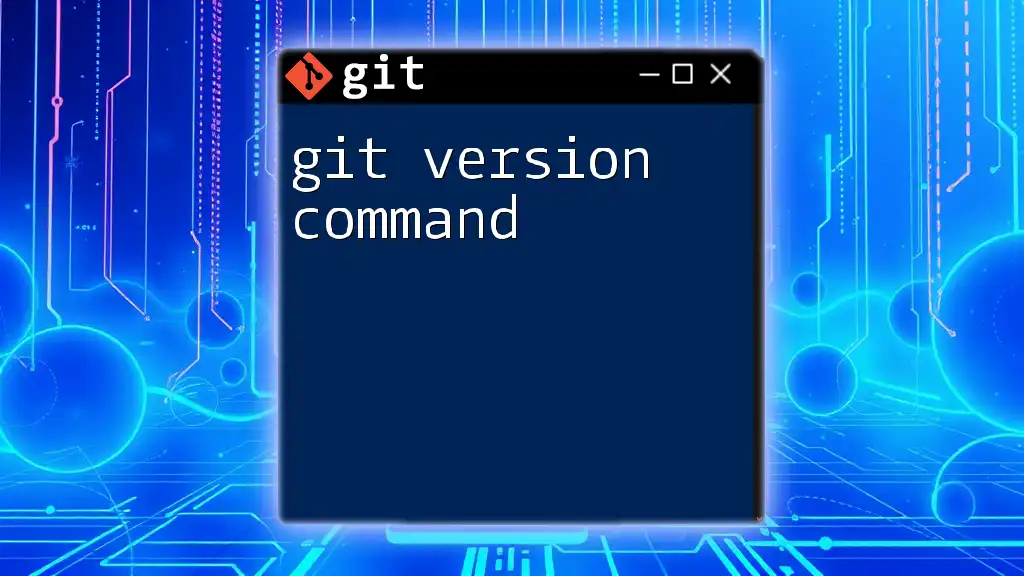
Conclusion
Staying updated with the latest Git version is not only beneficial for your personal projects but is also a crucial aspect of collaborative programming. By understanding the new features, adopting best practices, and participating in the community, you can significantly enhance your version control skills and streamline your workflow. It's time to start exploring the latest features and see how they can elevate your Git experience!

Additional Resources
To further enhance your knowledge of Git, exploring the official Git documentation and various online tutorials is recommended. These resources will provide deeper insights and practical guidance, ensuring you're thoroughly equipped to utilize all that the latest Git version has to offer.

